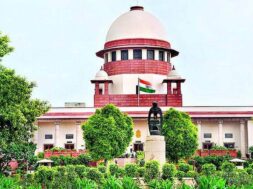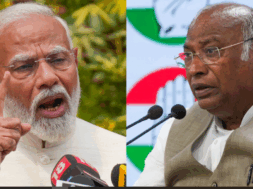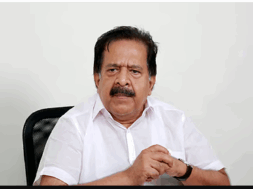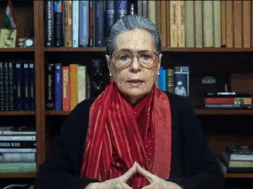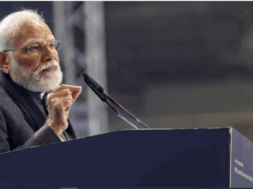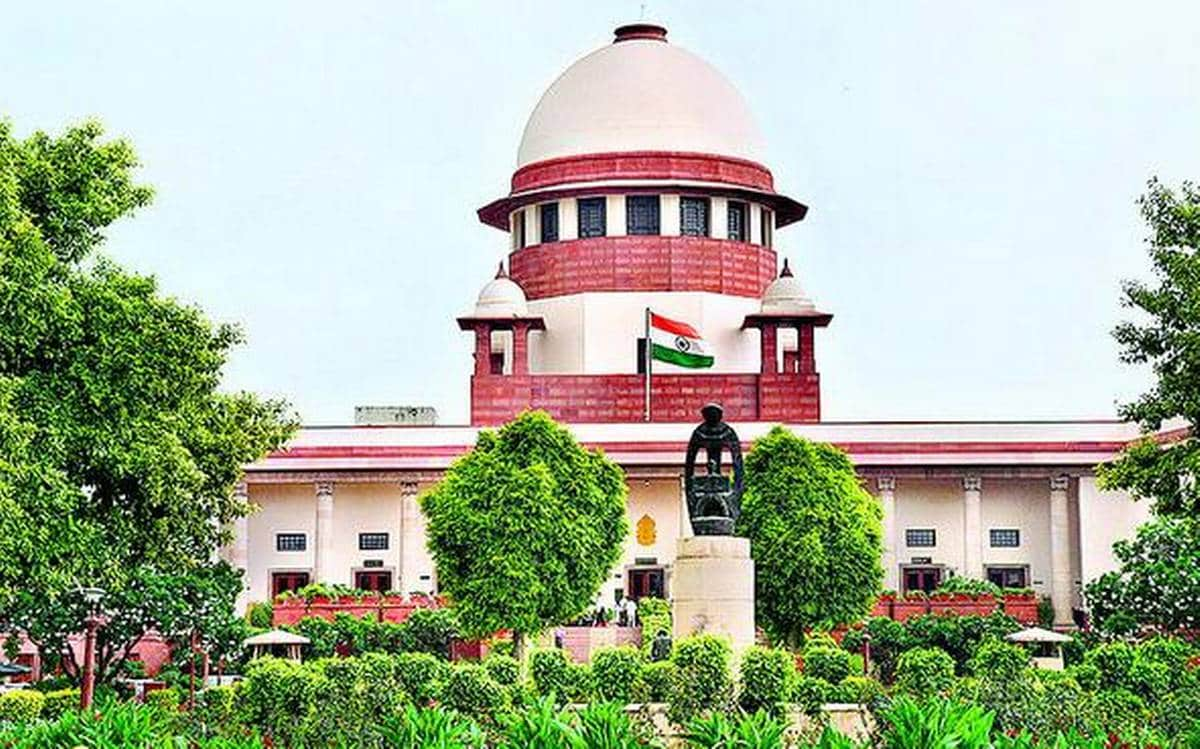
Manas Dasgupta
NEW DELHI, Mar 20: The Supreme Court on Monday gave the Centre leeway to pay in instalments ₹28,000 crore in arrears due to defence veterans under the One Rank One Pension (OROP) scheme, after the Chief Justice of India decried the government’s “sealed cover” submission practice forcing the Attorney General to read out the government’s stand on the issue in the open court.
The Supreme Court, which earlier had ordered the government to clear all the dues by the middle of the current month, agreed that the staggered payment of OROP arrears would be made to various categories of eligible pensioners, totalling 21 lakh persons, from April 2023 till February 2024.
The CJI DY Chandrachud hearing the OROP case, lashed out at the practice of using sealed cover envelopes for submissions to courts. He refused to accept a sealed cover envelope submitted by the Attorney General of India stating the decision of the Defence Ministry on the payment of pensions, asking the government’s top lawyer to read it or take it back.
“We will not take any confidential documents or sealed covers, and am personally averse to this. There has to be transparency in court. This is about implementing the orders. What can be the secrecy here?” he said, adding that he wanted to put an end to “the sealed cover business.”
“If the Supreme Court follows it, High Courts will also follow”, he told the Attorney General. The Chief Justice further called sealed covers ‘completely against’ settled judicial principles. “It can be resorted to only when it is about a source or endangering someone’s life”, Chandrachud said.
The alternative arrangement for clearing the payment of dues under OROP was made after the Ministry of Defence, represented by Attorney General R. Venkataramani, said the Ministry of Finance had conveyed its inability to provide the entirety of the OROP arrears “in one go.” The CJI said the court sees the government’s difficulties on payment of OROP arrears to ex-service personnel, but needs to know the plan of action. The Attorney General then read the report.
“Budget outlay is not able to meet this huge outflow at one go. Resource is limited and expense needs to be regulated. The finance ministry was taken into confidence, and it has said it is unable to meet this outflow at one go,” he said.
The bench which also comprised Justices PS Narasimha and JB Pardiwala is currently hearing the Indian Ex-Servicemen Movement’s (IESM) plea over payment of OROP dues. The top court, on March 13, came down heavily on the government for “unilaterally” deciding to pay OROP dues in four instalments.
The defence ministry has recently filed an affidavit and a compliance note in the top court, giving the time schedule for payment of the arrears of ₹ 28,000 crore to ex-servicemen for years 2019-22. The Supreme Court allowed time to the Union government to make staggered payments of OROP arrears to ex-servicemen by February 28, 2024, as the Centre said it faced a huge outgo of ₹ 28,000 crore, and payment of it at one go could have serious implications for defence management.
The court ordered that OROP arrears since 2019 would be payable to those earning family pension and gallantry award winners (total 6 lakh persons) by March 30, to more than 70 year-old ex-servicemen (around 4 lakh) by June 30, and rest (10-11 lakhs) in on August 31, November 30 and February 28.
The Chandrachud-led bench said though it was upset with unilateral letter by defence ministry for payment of OROP arrears in instalments in breach of the Supreme Court judgment to pay by March 15, on perusing the difficulties, it feels the national interest must not be lost sight of.
Sealed covers are a practice followed in the Supreme Court (and sometimes lower courts as well) of seeking and accepting information from government agencies in sealed envelopes that can only be seen by the judges.
The CJI spoke on similar lines on sealed cover submissions last month while hearing a clutch of petitions on the Hindenburg Research report and its aftermath. Justice Chandrachud, who was then heading a three-judge Bench, told Solicitor General Tushar Mehta that the Court wanted to maintain “full transparency”. The move came after Mehta submitted a folder with the names proposed by the government for a committee of experts who could suggest a mechanism for the protection of investors.
Justice Chandrachud responded, “We would rather not accept the sealed cover suggestions from you for this reason; in constituting a committee which we want to do, we want to maintain full transparency. The moment we accept a set of suggestions from you in a sealed cover, it means the other side is not seeing them. Even if we don’t accept your suggestions, they will not know which of your suggestions we have accepted and which we have not. Then there may be an impression that well, this is a government-appointed committee which the Supreme Court has accepted even if we have not accepted your suggestions. So, we want to maintain the fullest transparency in the interest of protecting the investors.”
Finally, in its order on the matter on March 2, the Supreme Court set up a six-member expert committee “to investigate if there was a regulatory failure in dealing with the alleged contravention of laws pertaining to the securities market in relation to the Adani Group or other companies”. It said this committee could submit a report in a sealed cover in two months.
Earlier, in October 2022, a Bench led by Justice Chandrachud and Justice Hima Kohli called sealed cover submissions a “dangerous precedent”, which make “the process of adjudication vague and opaque.” ‘
In its order issued in ‘Cdr Amit Kumar Sharma v Union of India’, the Bench said “the non-disclosure of relevant material to the affected party and its disclosure in a sealed-cover to the adjudicating authority…sets a dangerous precedent”.
It said this “denies the aggrieved party their legal right to effectively challenge an order since the adjudication of issues has proceeded on the basis of unshared material provided in a sealed cover.” Secondly, they said, the practice “perpetuates a culture of opaqueness and secrecy. It bestows absolute power in the hands of the adjudicating authority. It also tilts the balance of power in a litigation in favour of a dominant party which has control over information. Most often than not this is the state.”
In March 2022, two separate Benches of the Supreme Court flagged the practice. In a case involving the Bihar government, pertaining to the Patna High Court orders granting bail to 56 persons who were arrested in March 2020, a three-judge Bench headed by then Chief Justice N V Ramana said it wanted arguments to be presented in open court. “Please don’t give us a sealed cover, we don’t want it here,” CJI Ramana told the Patna High Court’s counsel in the case.
The CJI’s displeasure was echoed later in the day by Justice Chandrachud, during a hearing on an appeal against the Centre’s ban on Malayalam TV Channel MediaOne. The channel had gone off air on February 8 after the Kerala High Court upheld the ban by relying on documents submitted by the Centre in a sealed envelope. But when the government repeated this practice before the apex court, it was pulled up by a three-judge Bench led by Justice Chandrachud that stayed the ban.
The Court can itself seek information in sealed covers under two circumstances: when information is connected to an ongoing investigation, and when it involves personal or confidential information.
The Supreme Court, for example, relied on sealed covers in the 2G case, in which it cancelled telecom licences. Between 2018-’19, the Court relied on information in sealed covers in cases related to the National Register of Citizens (NRC) in Assam, the BCCI reforms case, the Rafale case, and a petition seeking the quashing of FIRs in the Bhima Koregaon case.
In February 2020, interlocutors tasked by the Supreme Court to talk to anti-CAA protesters occupying a public road in Shaheen Bagh submitted a report in a “sealed cover” to the Supreme Court. The report was neither taken on record by the Bench nor made available to any of the lawyers.
